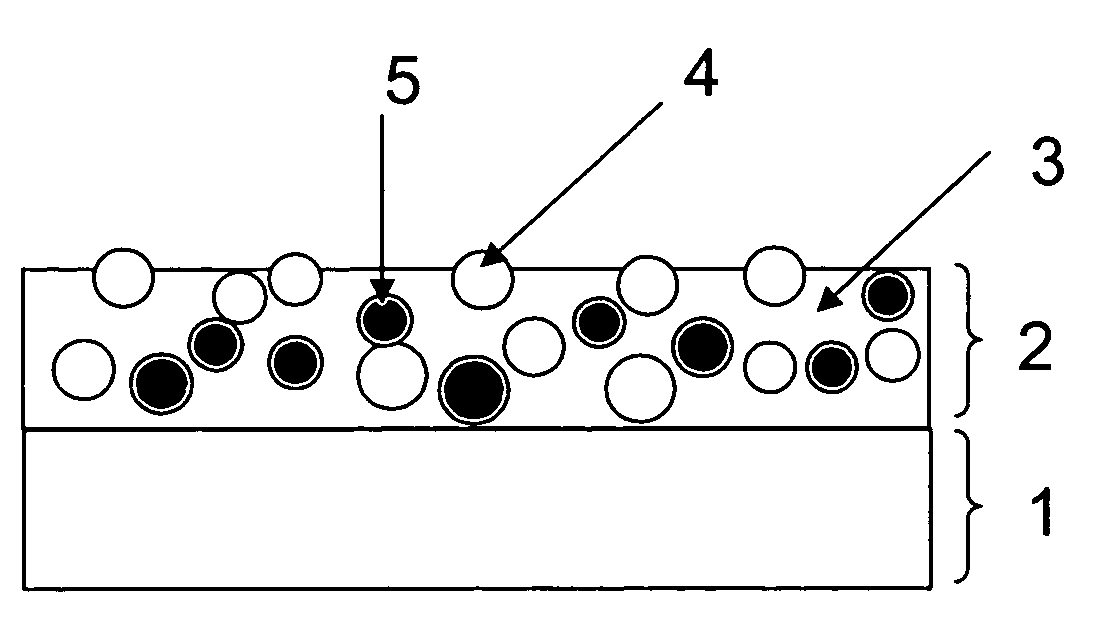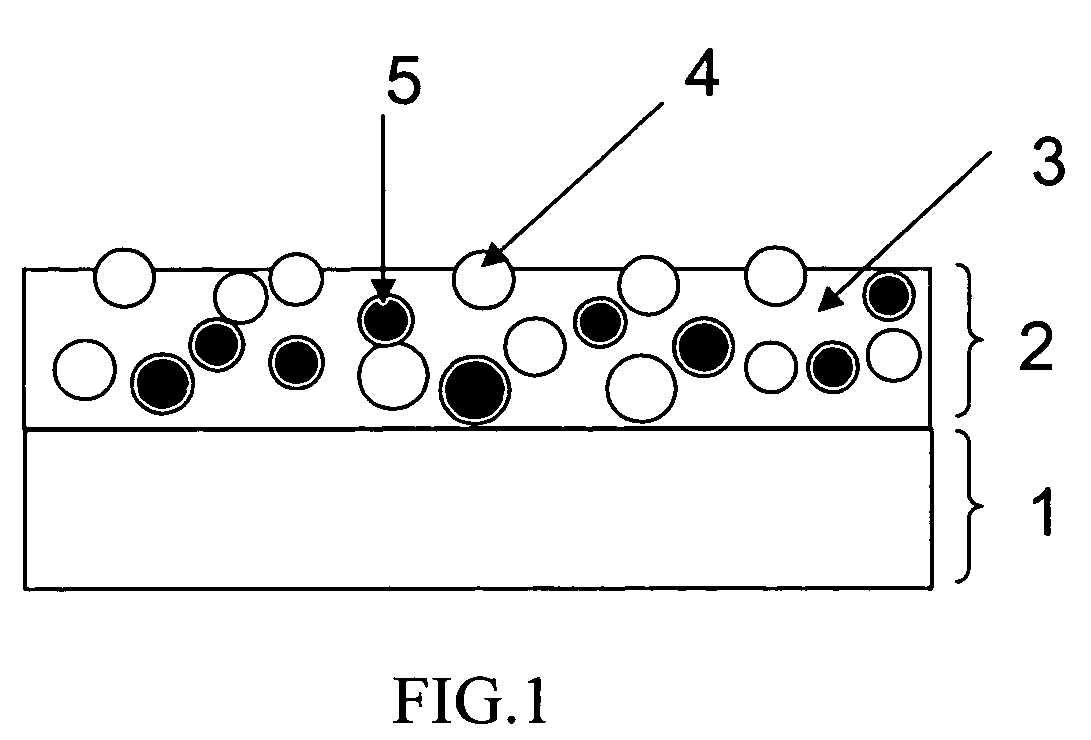Antiglare light diffusing member and method for producing same, and display
a technology of diffusing member and light, applied in the direction of diffusing elements, optical elements, instruments, etc., can solve the problems of inconvenient adjustment, inconvenient adjustment, and inability to adjust easily
- Summary
- Abstract
- Description
- Claims
- Application Information
AI Technical Summary
Benefits of technology
Problems solved by technology
Method used
Image
Examples
example 1a
[0162]A triacetylcellulose film (TD-80U manufactured by Fuji Photo Film Co., LTD.; refraction index 1.49, film thickness 80 μm) was used as abase material. On the base material, an antiglare light scattering coating liquid having the composition shown in Table 1 was coated with a slot die coater. Then, a solvent included in the coating liquid was evaporated. Then, the antiglare light scattering layer was cured through ultraviolet irradiation of 400 mJ using a high-pressure mercury lamp under an atmosphere of 0.03% or less of oxygen concentration. The dried antiglare light scattering layer had a thickness of 6.0 μm. Thus, a sample was prepared.
[0163]Here, a measuring method of the refraction index of a binder matrix is described below. A coating liquid similar to that described above was prepared. But, no particle was contained in the coating liquid. The coating liquid was coated, dried and cured according to a method similar to that described above. The refraction index of thus obta...
example 1b
[0166]An antiglare light scattering coating liquid having the composition shown in Table 1 was used. An antiglare light scattering layer was prepared in the same way as in Example 1A except for the type of the antiglare light scattering coating liquid.
[0167]The refraction index of the binder matrix, refraction index of the particle and average particle size of the particle were measured in the same way as in Example 1A.
example 1c
[0168]An antiglare light scattering coating liquid having the composition shown in Table 1 was used. An antiglare light scattering layer was prepared in the same way as in Example 1A except for the type of the antiglare light scattering coating liquid.
[0169]The refraction index of the binder matrix, refraction index of the particle and average particle size of the particle were measured in the same way as in Example 1A.
PUM
| Property | Measurement | Unit |
|---|---|---|
| internal haze | aaaaa | aaaaa |
| internal haze | aaaaa | aaaaa |
| particle size | aaaaa | aaaaa |
Abstract
Description
Claims
Application Information
 Login to View More
Login to View More - R&D
- Intellectual Property
- Life Sciences
- Materials
- Tech Scout
- Unparalleled Data Quality
- Higher Quality Content
- 60% Fewer Hallucinations
Browse by: Latest US Patents, China's latest patents, Technical Efficacy Thesaurus, Application Domain, Technology Topic, Popular Technical Reports.
© 2025 PatSnap. All rights reserved.Legal|Privacy policy|Modern Slavery Act Transparency Statement|Sitemap|About US| Contact US: help@patsnap.com


